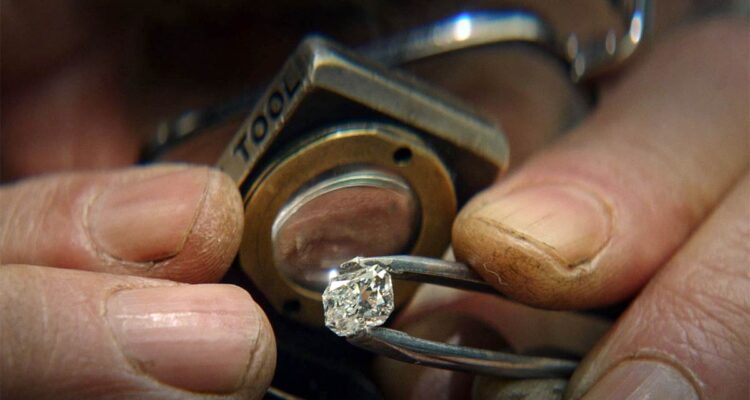Demystifying and questioning the very notion of authenticity, Jason Kohn’s informative and oddly riveting, diamond-documentary “Nothing Lasts Forever” is ostensibly about the oft-antagonistic relationship between natural and synthetic diamonds. Yet, diamonds are an in-road as Kohn explores the commodification of such abstractions as love and desire, questioning how exactly a shiny rock — one that isn’t even that rare — became a physical manifestation of commitment. What does it matter if a diamond is naturally mined or grown in a lab if the experts cannot even tell the difference? “Nothing Lasts Forever” may be more interested in asking these questions than providing any answers of its own. Yet, the questions are nevertheless endlessly fascinating.
Featuring interviews with the various stakeholders — diamond pricer Martin Rapaport, De Beers executive Stephen Lussier, gemologist Dusan Simic, jewelry designer Aja Raden, and crystal-maker John Janik— as they volley criticisms back and forth about the role of diamonds within our lives. Unsurprisingly, Rappaport and Lussier argue most forcefully for the standardization and demarcation of diamonds, positioning the Rapaport Group and De Beers as the standard-bearers of the only true, authentic way to physicalize love — a naturally certified diamond. On the other side, Raden and Janik are increasingly bewildered about the state of diamond jewelry, opening wondering why it matters if a diamond is natural or lab-grown because, in the end, it’s only just a rock.
“Nothing Lasts Forever” is mainly aligned with the latter position, juxtaposing these interviews with a concise history of diamond mining and engagement ring sales. The film essentially argues that companies like De Beers artificially inflate the value of diamonds by withholding supply. An archival tour of the De Beers diamond safe by a very young Chris Wallace is shocking in just how expansive their repository is. As Raden and Janik make painfully clear, we are only willing to pay a premium for a diamond because we’ve been fed a steady diet of advertisements telling us of their value.
Synthetics upend the very ideas of scarcity and authenticity, creating better diamonds at a fraction of the cost. Unable to contend with price changes or buyer indifference, Kohn’s film hits its stride exploring how De Beers and Rapaport wage war against these so-called ‘fake’ diamonds. Equating the purchase of a synthetic to an inauthentic declaration of love, these arguments are both effective and, obviously, the cries of an industry unable to contend with changing products and values. As Raden suggests, it doesn’t really matter if the diamond ring is synthetic or natural — it only matters if the owner knows (and cares about) its true origin.
Often echoing a thriller — Logan Nelson’s nervy score doing a lot of the heavy lifting — “Nothing Lasts Forever” is both concise and wide-ranging. The film moves from the New York Diamond District to Salt Lake City to Botswana with remarkable speed, if not clarity. Kohn attempts to fit a lot into the film’s relatively short runtime (about 87 minutes). Predictably, a few things are only giving passing reference, including the status of conflict diamonds, GIA certification, and the exploitation of diamond miners. While the film would’ve benefitted from occasionally slowing down and laying out context, “Nothing Lasts Forever” is zippy enough to provide a worthy introduction and, perhaps, inspire research after the credits roll. [B+]
Follow along for all our coverage of the 2022 Berlin Film Festival.

